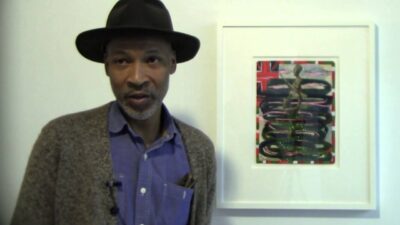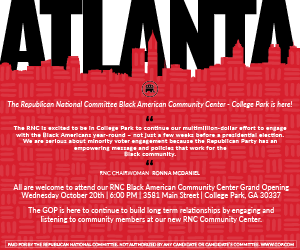on
Famed artist Radcliffe Bailey who made Atlanta his home has died. Bailey who received international acclaim for his remarkably impressive and prodigious body of work, which includes a mammoth mural at the world’s busiest airport, Atlanta Hartsfield, welcoming visitors and giving them a glimpse of the cultural treasures in the Capital of the South passed away on Wednesday, Nov. 15.
Bailey died after a prolonged and hard fought battle with brain cancer. He was only 55.
Few artists achieve the level of recognition so early in their career as the Atlanta-based artist Radcliffe Bailey. The artist-in-residence’s fine-tuned sensibilities to tapestry and color are often noted as the quintessential ear markings of African American art forms. Radcliffe Bailey, who is often compared to other acclaimed African American artists, including the world renowned painter Romare Bearden, has been creating breathtaking and thought-provoking pieces since he hit the art scene in the early ’90s.
In an exclusive interview before his death, Bailey shared about his art, his process and the inspiration behind his work which made him one of the most celebrated artist in the world.
“I am forever a student of the then and the now. I think about sensibility in terms of images and things that I project and how important it is for me to represent those who are close to me in my family and my community,” explains the artist.
“I remember my first sense of sanctuary was when my parents would send me and my brother to visit my grandfather in Virginia. It was a small town and he had built a lot there, a farm and a small church. … I’ve made my studio my place of prayer, where I go to solve problems. It is where I challenge myself and where I find peace.”
The sought-after artist was deeply introspective and spiritual. He spoke reverently about the importance of participating in life fully, with a sense of commitment that transcends the boundaries of one’s own personal life and interests. “I think there is a way to be active in one’s community. And I don’t necessarily mean going to work at a community center, but by reaching out and touching, really touching those who are closest to you. A lot of what I do is through karma and giving. I go to a space where my work is not about me. I’m just an agent. It goes back to my belief and God,” he says with remarkable humility.
Bailey said that he was a compilation of people and cultures and his work reflects that sentiment in its depth and complexity. “There are many people inside me, even Europeans, and all of those people come out in some kind of way. I’m a student of the world,” he continued. “As African Americans we have so much that comes at us … [but] we recognize sounds and beats from all around the world and I fuse all of those thoughts and elements together.”
When Radcliffe Bailey spoke of the positive images, in addition to the artists who influenced his work like famed African American artist Jacob Lawrence, he pointed to real life and accessible role models like fathers, grandfathers and uncles. “It’s more about triumph and the beauty of Black people who walk among us. The surreal is real to Black people in terms of the things we’ve been through. We’ve really come through so much and have achieved so much in such a short time,” he said reflectively.
Bailey continued to express gratitude for the accomplishments of African Americans, noting that slavery was a short period in the African American continuum. He was hopeful about the opportunities available to African American men, or, as he said, “from the plantation to the presidency.”
The pensive painter also shared his concern about the lack of suitable outlets for African American art. He admitted with some dismay that he didn’t see the type of numbers that he expected in college and university art programs. “We have always been very strong in the arts, but we don’t really focus on it. I received information differently when I was in school. I processed it totally differently and the arts helped me with that,” explained Bailey. He added, with strong reservation, that while the number of African Americans getting recognition for their work is growing, there is more to be done.
“We don’t have auction houses or strong galleries or our own system to gain from. We’re doing great work, but the control is not necessarily in our hands. We are an intuitive people who can see what’s coming ahead,” he said with a pause.
Join our email list to stay connected.






